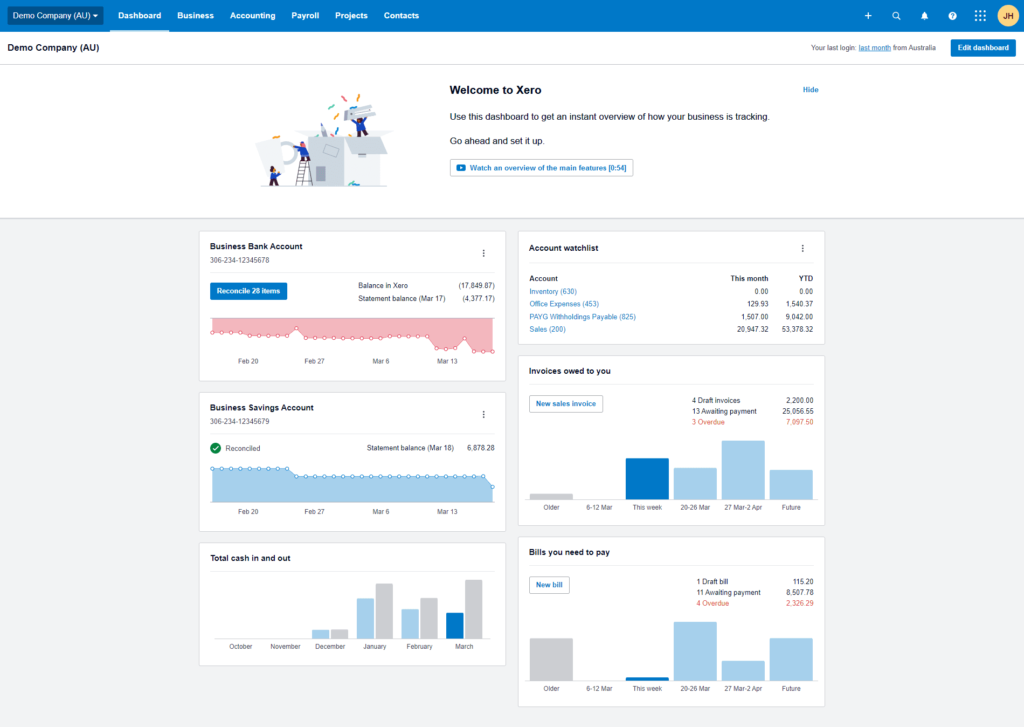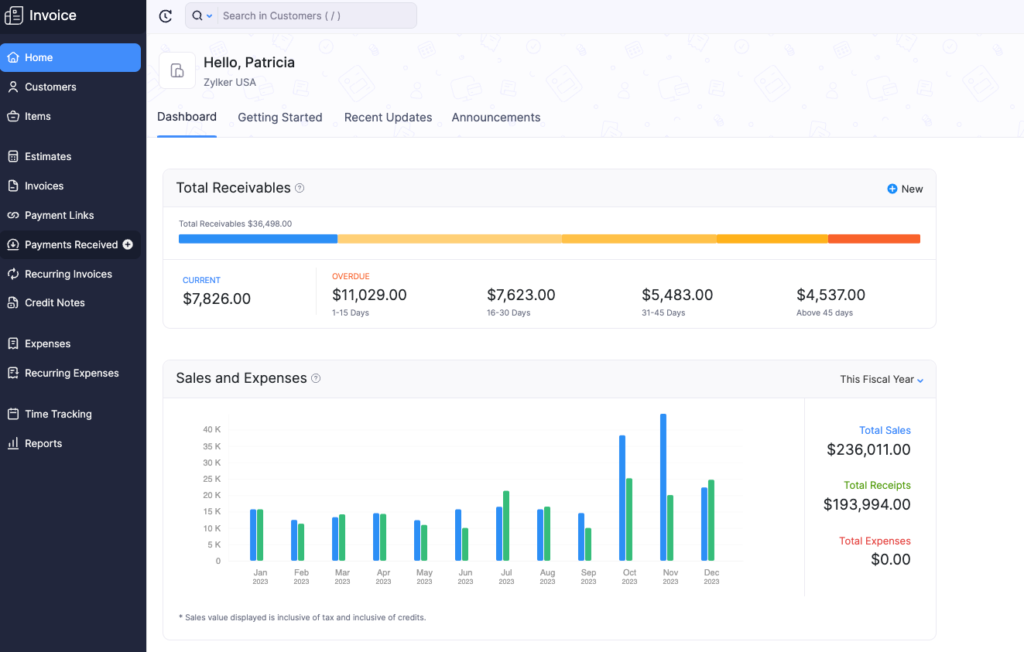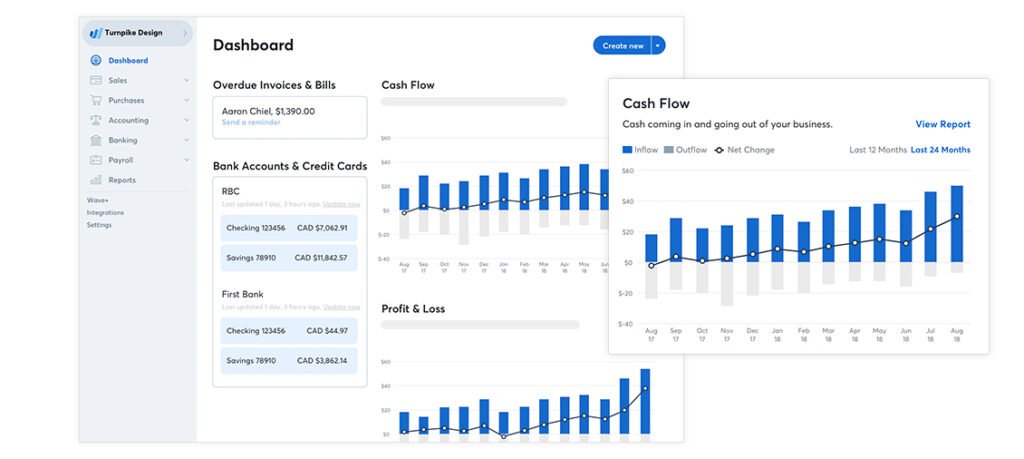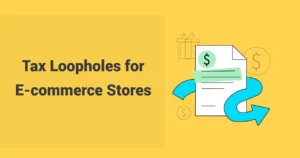Online sales are surging—projected to hit $6.56 trillion by 2025, per eMarketer’s forecast. Whether you’re on Amazon, Shopify, Etsy, or all three, your finances can make or break you. Scary stats: 82% of small businesses fail due to cash flow, inventory errors cost 2.3% of value (thousands lost for big sellers), and tax penalties average $18,000, with 44% audited over sales tax.Sellers battle spreadsheets that miss Amazon’s 15+ fees and Shopify’s payout delays, risking deadlines and profits. Good eCommerce accounting software is a must. This 2025 guide offers practical insights on top tools—features, pricing, integrations—for dropshippers, artisans, and multi-channel pros, plus how SAL Accounting powers your finances.
Quick Takeaways
- Top Picks: QuickBooks, Xero, Zoho Books, A2X, Wave, FreshBooks shine for 2025.
- Time-Saver: Syncs with Amazon, Shopify, cutting bookkeeping hours.
- Cost: $0-$30/month fits any budget.
- Perk: Auto-handles taxes and inventory.
What’s the Best eCommerce Accounting Software in 2025?
For multi-platform sellers, A2X with QuickBooks Online ($59/month total) cuts work by 78%, tracking payouts and profits. Under $50K? Wave’s free with manual imports. International? Xero handles 160+ currencies. Pick based on sales, platforms, needs—software’s a must for profit and tax ease.
Why Online Sellers Need Special Accounting Software
Selling online isn’t just about products—it’s about tracking money details regular tools can’t handle. Here’s why eCommerce accounting software is a must for online sellers:
- Multi-Platform Mess: Selling on Amazon, Shopify, and Etsy means juggling sales, fees, and refunds across different payout systems. Over half of multi-channel sellers struggle without good tools, spending 12.3 hours weekly on accounting—down to 3.5 with eCommerce bookkeeping software.
- Sales Tax Trouble: Over 10,000 U.S. tax zones (says the IRS) make compliance hard. About 44% of sellers face audits, with 14 tax filings yearly taking 25-40 hours without automation.
- Inventory Hits Your Wallet: Poor tracking costs 72% of sellers 2.3% of inventory value—$27,000 yearly for the average eCommerce business in lost stock and sales.
- Global Sales Chaos: International selling brings currency headaches. Accounting software for online businesses like Xero manages 160+ currencies with auto-exchange rates.
- Custom Categories Needed: Regular tools lack buckets for marketplace fees, shipping, and commissions—eCommerce software fixes that.
Imagine you’re a Shopify seller earning $200K yearly. Spreadsheets can’t sync sales, sort state taxes, or track fees eating your profits. You waste time, risk tax penalties, and miss what’s making money. eCommerce accounting software fits how you sell, saving time and avoiding costly errors.
| Case Study: Amazon Seller Recovers $27,000 in Missing FeesThe Problem: An Amazon seller came to us confused. With $1.2M in yearly sales, his profits kept shrinking even though he was selling more. What We Did: I’ve seen this many times before – fees eating into profits without sellers noticing. We set him up with QuickBooks and A2X. Right away, we found that Amazon had quietly raised fees on 15 products. What really shocked me was discovering they’d overcharged him $27,000 that didn’t show up in their normal reports. The Result: We got back the full $27,000, but better yet, he could finally see which products made money. He cut 7 losers and focused on his winners, boosting profits by 4.3%. “I finally know what’s going on in my business,” he told me. I think his $139/month software was money very well spent. |
➜ Read more: “E-Commerce Taxes in Canada Made Simple: Types, Tips & Strategies”
Top 7 eCommerce Accounting Software Options in 2025
I’ve done the research and picked the seven best accounting options for online sellers in 2025. Each has strengths that fit different business sizes, budgets, and platforms.
1. QuickBooks Online

QuickBooks Online dominates with over 85% of the small-business accounting market globally in 2025, with a strong U.S. lead—85.58% of its users are American, per 6sense. It’s a favorite for its powerful eCommerce tools and top-notch support, saving users an average of 5.4 hours a week over manual bookkeeping services.
Key Features
- Tracks sales, fees, and shipping from Amazon and Shopify separately.
- Sorts Amazon FBA fees (storage, fulfillment, referral) automatically.
- Shows profit by sales channel.
- Updates inventory and costs in real time.
- Manages sales tax across thousands of zones.
- Creates inventory and tax reports.
Pricing
Starts at $30/month for Simple Start. The Plus plan ($90/month) works best for eCommerce with its inventory features. Advanced costs $200/month with better analytics.
Best For
Small to medium online businesses earning $100K to $5M yearly. It’s perfect if you’re growing and need software that connects to multiple platforms while keeping taxes and finances clear.
🌟 Pro Tip: Try QuickBooks’ class tracking to split Amazon Handmade and FBA sales—it shows which channel’s really paying off.
2. Xero

Xero’s got a fresh, easy-to-use design and rocks for sellers going global. It’s built to handle international accounting without the headache.
Key Features
- Records sales even with delayed marketplace payouts.
- Handles VAT/GST and tax codes worldwide.
- Converts currencies accurately.
- Offers eCommerce-ready account categories.
- Supports inventory valuation with audit trails.
- Builds sales channel reports.
Pricing
Starts at $15/month for Early plan. Standard plan costs $42/month and handles most eCommerce needs. Premium at $65/month adds multi-currency features needed for international sellers.
Best For
Any size business selling internationally. It’s a gem if you deal with multiple currencies or need VAT/GST sorted across countries, making it perfect for Shopify stores accounting with international customers.
Pro Tip: Use Xero’s tracking categories to see which products make the most cash across your sales channels—super handy no matter where they sell.
| Case Study: Etsy Crafter Avoids Tax DisasterThe Problem: Sarah’s Etsy jewelry shop jumped from $45K to $380K in one year. She came to us worried sick about sales tax, having never tracked what she owed in 32 different states.What We Did: I see this all the time with sellers who grow fast. We quickly set her up with Xero to track taxes by state. In my experience, you’ve got to move fast on tax issues. Our team helped her get permits and work out payment plans. I worked with her myself on a simple system to keep track of all these different tax rules.The Result: Sarah had to pay $12,300 in back taxes, but we got most of the late fees waived, saving her over $31,000. The look of relief on her face said it all. Now she spends just 30 minutes a month on tax stuff. “What I thought might sink my business is now no big deal,” she told me recently. |
➜ Read more: “EIN for Canadian Companies: Why It’s Needed and How to Apply”
3. Zoho Books

Zoho Books is a steal, especially if you’re already using Zoho tools. Bonus? It’s free if your business makes under $50K a year.
Key Features
- Classifies sales from different marketplaces with custom fields.
- Tracks inventory costs accurately.
- Adjusts for multiple currencies automatically.
- Updates inventory on your balance sheet.
- Reports sales tax by location.
- Tracks product launch costs.
Pricing
Starts at $10/month for Standard. Professional costs $30/month and adds better inventory features. Free forever for businesses making under $50K yearly.
Best For
Growing eCommerce businesses wanting value—especially Zoho fans looking for an affordable, solid option.
🌟 Pro Tip: Zoho’s custom reports can break down product profits, even with shifting shipping costs—great for dropshippers dealing with delivery ups and downs.
4. Wave Accounting

Wave is a total freebie that still gets the job done for small sellers. With over 4 million users worldwide, it’s a real deal for those watching their wallet.
Key Features
- Uses double-entry accounting for proper entries.
- Customizes categories for platform expenses.
- Sorts income and expenses by channel.
- Makes profit/loss and balance sheets.
- Imports sales via CSV files.
- Tracks basic sales tax.
Pricing
Completely free for accounting and invoicing. Optional paid add-ons include payment processing (2.9% + 30¢ per transaction) and payroll services ($20-$35/month).
Best For
New eCommerce sellers under $50K yearly or single-platform users. It’s a smart starting point before you need fancier tools.
🌟 Pro Tip: Save your platform’s monthly statement as a CSV and set up a Wave template. It takes just 15 minutes a month to input.
➜ Read more: “A Guide to Withholding Taxes Under the U.S.-Canada Tax Treaty”
5. FreshBooks

FreshBooks keeps it simple with an easy interface. With 30 million users globally, it’s a hit for small sellers, especially those mixing products and services.
Key Features
- Pulls sales data from Shopify and WooCommerce.
- Calculates product costs for profit.
- Matches payment deposits to sales.
- Splits revenue and shipping in profit/loss reports.
- Tracks sales tax collection and payments.
- Includes time tracking for services.
Pricing
Starts at $15/month for Lite plan (up to 5 clients). Plus costs $30/month with unlimited clients. Premium at $55/month adds accounts payable features.
Best For
Small sellers under $200K yearly—perfect for solo entrepreneurs or those blending products with services.
🌟 Pro Tip: Use FreshBooks’ project tracking to tally up new product launch costs (think development, photos, marketing) for a clear ROI.
6. A2X

A2X is all about linking your eCommerce platforms to your accounting system. Over 12,000 businesses trust it to nail marketplace payout tracking, especially vital for Amazon sellers accounting.
Key Features
- Matches payout entries to the right sales period.
- Splits Amazon settlements (revenue, fees, refunds).
- Records unpaid sales accurately.
- Categorizes complex FBA fees.
- Handles multi-currency payouts.
- Syncs with QuickBooks or Xero.
Pricing
Starts at $29/month for up to 200 orders, scaling to $229/month for 15,000+ orders. Most sellers use the $49/month Growth plan that handles up to 2,000 monthly orders.
Best For
Sellers on multiple channels like Amazon and Shopify who need spot-on settlement accounting.
🌟 Pro Tip: Use A2X’s historical import to fix past Amazon sales data—gold if you’re prepping for audits or investors.
➜ Read more: “How to File Your U.S. Tax Return While Living in Canada”
7. Sage 50cloud

Sage 50cloud brings heavy-duty inventory accounting for growing eCommerce businesses. It’s a champ for sellers with tricky stock or multiple setups.
Key Features
- Tracks landed costs (shipping, duties, imports).
- Manages serial/lot tracking for high-value items.
- Separates sales channels or warehouses.
- Records inventory moves accurately.
- Handles multi-company transactions.
- Delivers audit-ready financials.
Pricing
Starts at $47/month for Pro (billed annually). Premium at $70/month adds forecasting. Quantum at $187/month supports multi-company accounting.
Best For
Mid-sized eCommerce businesses ($500K-$5M) with complex inventory, multiple entities, or strict accounting rules—especially those with physical products.
Pro Tip: Use Sage’s departmental accounting to make profit/loss statements per sales channel—clears up which platforms are worth your focus.
Comparison Table: Features, Pricing, and Integrations
Compare 2025’s top eCommerce accounting tools by features, pricing, and integrations to find your best match.
| Software | Price | Top Features | Integrates With | Inventory | Currencies | Best For |
| QuickBooks Online | $30/mo | Channel profit, fee split | Amazon, Shopify, A2X | Auto-tracked costs | 145+ | Small-medium ($100K-$5M) |
| Xero | $15/mo | Payouts, custom reports | A2X, major platforms | Multi-valuation | 160+ | International, any size |
| Zoho Books | $10/mo (free <$50K) | SKU profit, tax reports | Zoho, Shopify | Lot tracking | 180+ | Growing, Zoho users |
| Wave | Free | Double-entry, basics | CSV imports | Manual only | USD, CAD | Newbies (<$50K) |
| FreshBooks | $15/mo | Project costs, P&L | Shopify, WooCommerce | Basic costs | 170+ | Solo, mixed offerings |
| A2X | $29/mo | Settlement split, fees | Amazon, Shopify, eBay | Via QuickBooks/Xero | All marketplaces | Multi-channel |
| Sage 50cloud | $47/mo | Landed costs, multi-P&L | Third-party tools | Serial/lot, landed | 20+ | Mid-size, complex stock |
Note: Prices shown are entry-level—costs go up as your business grows. Feature availability varies by pricing tier.
Key Features to Look for in eCommerce Accounting Software
Picking the right eCommerce accounting software means focusing on features that keep your books spot-on and your decisions sharp—here’s what you need:
Platform-Specific Accounting
You want software that nails sales from Amazon, Shopify, and other platforms, splitting out sales, fees, shipping, and taxes automatically. For those selling in multiple countries, you’ll need to consider tax implications of working remotely in Canada for a US company to avoid compliance issues
Example: A2X takes an Amazon payout and sorts it into sales, referral fees, FBA costs, and refunds—saving you hours of manual work.
Multi-Currency Support
If you sell internationally, your software must manage different currencies, tracking exchange rates and gains or losses.
Example: Xero logs your Euro Etsy sales, converts them to dollars at payout, and shows any profit or loss from the swap.
Inventory Accounting
Good software adjusts your inventory value on your balance sheet and tracks costs when you sell.
Example: Zoho Books adds stock to your assets when it arrives and cuts it when sold, keeping your finances real.
Revenue Timing
Marketplace payouts often come days or weeks after sales. Your software should log revenue when it’s earned, not paid, with receivables for pending payments.
Example: A2X records a $10,000 Amazon sale in June (even if paid July 2nd) and ties it up when the cash hits.
Customizable Chart of Accounts
Standard accounting categories don’t fit eCommerce. You need slots for platform fees, shipping, and channels tailored to eCommerce.
Example: QuickBooks Online lets you set up “Amazon FBA Fees,” “Shopify Charges,” and “Etsy Costs” for clear profit breakdowns.
Sales Tax Handling
With thousands of U.S. tax zones, it’s got to track taxes as liabilities (not income) and record payments. It is good to now that 44% of sellers get audited, so this matters.
Example: QuickBooks with Avalara sets up a liability account per state, logging taxes collected and paid to keep you safe.
➜ Read more: “6 E-Commerce Accounting Errors That Could Cost You Thousands“
How to Choose Your eCommerce Accounting Tool
Finding the right software comes down to five simple factors:
Business Size & Needs
Your annual sales determine which tools fit your budget:
- Under $50K: Wave or Zoho Books (free) cover the basics
- $50K-$500K: QuickBooks Plus ($90/mo) or Xero Standard ($42/mo)
- $500K-$5M: QuickBooks Advanced ($200/mo) + A2X ($49/mo)
- Over $5M: Sage 50cloud ($187/mo) for larger operations
Selling Platforms
Each marketplace needs specific accounting solutions:
- Amazon: A2X handles FBA fees and payout tracking
- Shopify: QuickBooks connects directly; add A2X for fees
- Etsy: FreshBooks or Xero track materials and costs
- Multi-Channel: Pair QuickBooks or Xero with A2X
Inventory Needs
Your product setup affects which software works best:
- Dropshippers: FreshBooks or Wave (no inventory needed)
- FBA Sellers: QuickBooks Plus tracks warehouse values
- High-SKU: Zoho Books or Sage manage lots and costs
- Manufacturing: Sage 50cloud tracks materials and production
Tax Complexity
Your tax obligations determine your software needs:
- Single-State: Any tool works (record tax as liability)
- Multi-State: QuickBooks with Avalara handles many states
- International: Xero manages VAT/GST across countries
Note: Cross-border tax specialists can ensure proper compliance; always the safest option.
Budget Reality
Good accounting is an investment, not an expense:
- Startup: Free tools like Wave cover basics
- Growth: Spend 1-2% of revenue on accounting tools
- Scaling: Clean books help secure better financing
🌟 Pro Tip: Choose software with solid basic accounting over fancy features.
| Case Study: Shopify Dropshipper Scales with ConfidenceThe Problem: Mike’s Shopify store was making $75K monthly selling fitness gear. “I’m making sales, but I have no clue which products actually make money after I pay for ads and all the fees,” he told me at our first meeting. What We Did: From working with lots of online sellers, I knew Zoho Books would be perfect for him. We set it up to track ad costs for each product. I think most dropshippers miss how much ads eat into their profits. We built simple reports that showed him exactly what was working and what wasn’t. The Result: With clear numbers, Mike cut 12 products that weren’t making money and pushed his 5 best sellers. Within three months, sales went up just 15%, but profits jumped 78%. I was really happy to see him use his better cash tracking to get discounts from suppliers, adding another 8% to his bottom line. “That $30 a month for Zoho might be the best money I spend,” he told me recently. |
➜ Read more: “Best Bookkeeping Tools for Small Business Owners in Canada“
Conclusion: Set Up Your eCommerce Business for Success
The right eCommerce accounting software in 2025 builds a foundation to protect your business and drive growth—not just crunch numbers. With 82% of small businesses failing over cash flow and tax penalties averaging $18,000, solid accounting is a must-have, not a maybe.
Tools like QuickBooks, Xero, or Zoho Books turn bookkeeping into an edge. Need more? SAL Accounting delivers expert eCommerce bookkeeping to keep your books audit-ready and profits high.
Act now, contact us and secure your success!
FAQ: Your eCommerce Questions Answered
It depends on what you need: QuickBooks Online paired with A2X is the top choice for sellers on multiple channels. Xero is awesome for people selling worldwide. Zoho Books gives great bang for your buck if you’re growing. Wave is free for anyone making under $50K a year.
A2X is the champ for both Shopify and Amazon, making sure payouts match up with the right time periods. It handles Amazon’s messy fee pile and Shopify’s payment fees perfectly.
Hook your eCommerce platforms right into your accounting software with tools like A2X. Set up bank feeds to pull in transactions on their own with rules to sort them. Use repeating templates for regular costs. This setup can slash manual bookkeeping by 70-80% for most sellers.
Yes, because marketplace reports aren’t real accounting—they don’t make entries, keep your categories straight, or build the financial statements you need for taxes and decisions. Even small sellers need proper software to watch assets, debts, and worth while keeping business and personal money apart.
QuickBooks Online is stronger for tracking inventory and handling U.S. taxes, so it’s great for sellers here with lots of stock. Xero rocks at managing multiple currencies and global rules, making it perfect for sellers reaching across borders.
Wave gives you real double-entry accounting with categories you can tweak, all for free. It covers basic entries, financial statements, and receipt tracking—plenty for sellers under $50K in yearly revenue. Zoho Books also has a free plan for businesses under $50K, with extra eCommerce goodies built in.
Good eCommerce accounting software makes separate accounts for each tax area, listing collected taxes as debts (not income) on your balance sheet. It watches where you owe tax, figures out rates for each place, and keeps records ready for audits.






